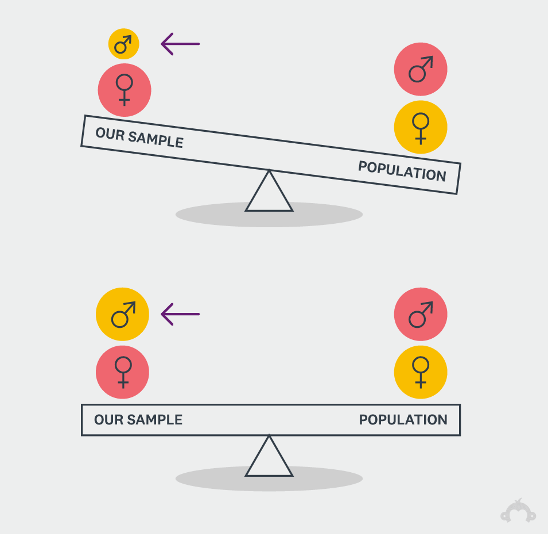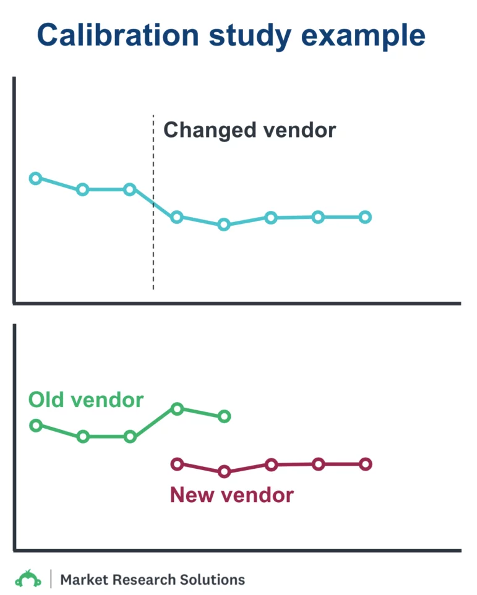SPONSORED CONTENT
By: Divya Shroff, Sr. Product Marketing Manager, SurveyMonkey Market Research Solutions
What is brand tracking
Brand tracking is a longitudinal study that measures brand health using key metrics that matter to a brand – from metrics along the sales funnel to brand attributes. It allows you to continuously monitor your brand and key competitors, with a focus on your brand health; its growth with consumers; and perceptions of brands in the market. It can also be used to measure brand lift from marketing campaigns, benchmark competitors and track new categories or markets of interest.
Why it might be time to rethink your brand tracker
Brand trackers have the potential to add a lot of value to an organization – they provide an understanding of business context and enable more confident decision-making. With the complexity and fast pace of today’s market, it becomes critical to have a brand tracker that gives you the ability to spot trends as they’re happening with up-to-the-minute brand health insights from your target consumers. And that’s why we just launched our new SurveyMonkey Brand Tracker solution, a flexible, end-to-end product that leverages high-quality data, AI insights, custom dashboards and expert services to help you stay ahead of the market.
However, too many companies still use brand trackers that provide static insights, collecting data from a point in time and not on a continuous basis. There are many good reasons to evaluate your brand tracker from time to time, and to even consider switching providers. Whether to ensure you’re tracking the right metrics and competitors, uncover more relevant insights, cut costs or ensure your tracker is agile and flexible enough to work at the speed your business demands, your brand tracker deserves a second look, so it can give you the edge you need to grow your business.
“It’s important to clearly identify why you’re making a change to your tracker. There is usually value in keeping a consistent view over time, but if that view becomes outdated due to category or marketplace changes, then sometimes the pros of changing trackers outweigh the cons.” – Director of Consumer Insights, Constellation Brands
4 steps to better brand tracking
Rethinking your brand tracker can be stressful: Who’s using it? Are these the right metrics? Is it time to switch to a new vendor? These are just a few of the questions that you might find yourself wondering about. Updating your brand tracker can be demanding, especially if you’re looking to switch vendors to save time or money, or want to get updated insights more frequently than before.
I recently went through the experience of switching brand tracking providers, and whatever your reason for changing up your tracker might be, here are four things I learned along the way to help you build a better brand tracker:
1. Think ahead and involve your stakeholders.
Brand tracking studies are critical to decision-making at companies, and often require a large time and money investment. When making major updates to it like moving to a new supplier, adequate planning and preparation are required. Clearly identifying which metrics to track, when and how often to track, which brands to include and how the results can be used is a good starting point.
Getting buy-in from key stakeholders is equally important. Trackers can be used by many cross-functional teams, and getting their alignment on why it makes sense to update your tracker or migrate to a new supplier is key. This is a great time to get feedback from users and cross-functional partners who rely on tracker data to make business decisions, and to ensure they are getting the value they need from it, as this is essential to ensuring adoption and credibility of the data and insights that will be generated.
As technology advances make their way into the research industry, provider capabilities and tracking methods continue to get better. This is also a good opportunity to ask your tracking vendor how you can leverage all their tracking capabilities to reach your goals and power your organization to greater heights.
2. Assess your sample composition.
While the urge to keep your sample consistent across trackers can be compelling, rethinking your brand tracker can be a great opportunity to evaluate sample composition for any biases and to make changes to ensure your sample is relevant to your tracking goals.
Especially important while migrating your brand tracker to a new research provider is knowing that any changes to the respondent panel used can introduce variability into the mix, and impact the quality of responses you get, resulting in inconsistent trends in the new tracker data vs. the old tracker data.
Going in with the assumption that there will be some differences between samples is fair, and warrants thinking about what those differences are and how they might skew the data. Different research providers often use different panel sources, or different blends of panels. Having a discussion with your provider can help to better understand these differences and how they might impact your data. In addition, work with your provider to consider other aspects of recruitment such as matching incentive models.
Another watch-out is to make sure your new tracker allows the same granularity in balancing your data. For example, your old tracker may be balanced on age, gender and income, but your new tracker may not collect income data, and so may not be able to balance on that variable. In such a case, examine your previous tracker sample specifications and talk to your new tracker provider about whether you might be able to include income as a screening question and balance on that, or if there are other ways to ensure sample consistency with the previous tracker sample composition.

While weighting and balancing the data can lessen the impact of sample differences, there’s still a chance that there will be some variability across trackers. However, the variability between samples isn’t always a bad thing – especially if your target audience has evolved or if the new respondent panel can reach segments the old panel was unable to – but it does mean that the new data will not be consistent with the old.
3. Revisit your survey design.
Survey design and setup play a big role in ensuring high-quality, usable data for any research project. These fundamentals are maybe even more important for brand tracking studies, as the same survey is fielded wave after wave to provide the longitudinal data that makes a brand tracker what it is. Since the survey is typically designed, set up and programmed just once, at the onset, it’s critical to get it right.
I was recently part of a team that switched brand tracking providers, and while transitioning our survey design, we realized that the new provider’s methodology did not show brand logos/labels while asking brand health questions, which our old provider did. This resulted in brand awareness for a very popular brand showing up as much lower in the new tracker than in the old tracker, simply because it has a very distinct and widely recognized logo that was not shown to respondents in the new tracker survey.
When trying to reduce inconsistencies between your old and new trackers, survey design and programming are probably the most important steps (apart from sample design). It is best practice to mirror the survey layout, question text and data structure from the previous tracker to reduce variability between both tracker surveys, as that can impact the data quality and cause a messy tracker transition.
Also important to note is that any modifications to things like question text, question type or response options, can introduce more variability between your tracker surveys. However, switching to a new brand tracker does allow you the opportunity to add new custom questions to your survey.
If you choose to do so, ensure that all new questions are added to the end, so that the standard key metric questions are still in the same place as in your previous survey and responses to those are not impacted by the new questions added.
“Considering how your consumers/customers think about and experience the category is critical to ensuring you’re asking things in a real-world context. What’s the true brand consideration set? What language would consumers actually use when they talk about the category?” – Director of Consumer Insights, Constellation Brands
4. Calibrate both trackers.
Calibrating your new tracker to the old one is the final “review” step before you completely transition to the new tracker. What this simply means is running both trackers, old and new, in parallel for at least a few months or waves and comparing rankings of metrics to see how well things align across both trackers. This provides some time to observe and investigate data trends across both trackers, and iron out any irregularities or variance seen on the back end.
While this may seem less relevant if you are not switching to a new tracking provider, in reality, your new tracker results can be impacted by sample or panel changes, question updates, etc. In this case, calibrating the updated or new tracker to the old one also helps you set baselines for your new tracker, while still giving you the safety net of your old tracker.
Let’s say you switch vendors without calibrating both trackers, and you see a significant dip in results in your new tracker. Without being able to compare to the old tracker, it would be really hard to know if the dip was due to an actual change in market conditions or if it was just due to the change in vendor, and consequently, a change in respondent source. Running both trackers in parallel can provide a check and give you confidence in the new tracker, while also setting a baseline to compare to in the future.

Running both trackers in parallel is also a great time to demonstrate the benefits of the new tracker to stakeholders and get users comfortable with the new tracker before letting go of the old one.
And that’s what I have to share today! Four ways to get to a better brand tracker and reduce the stress that comes with it. Reach out if you’d like to learn more – I’d love to connect.
Author

Divya Shroff has nine years of experience in market research, on the supplier side at Nielsen BASES, and on the client side at Constellation Brands. As a product marketer at SurveyMonkey, she helps build and launch new market research products. Divya grew up in Mumbai, India, and has an MBA from the University of Southern California. She lives in San Francisco and enjoys exploring the Bay Area, traveling, watching soccer and spending time with friends and family.
SurveyMonkey 
SurveyMonkey’s agile market research platform combines AI-powered solutions with a global Audience panel and research services, so you can quickly collect the quality data you need to make better decisions. Learn more.

